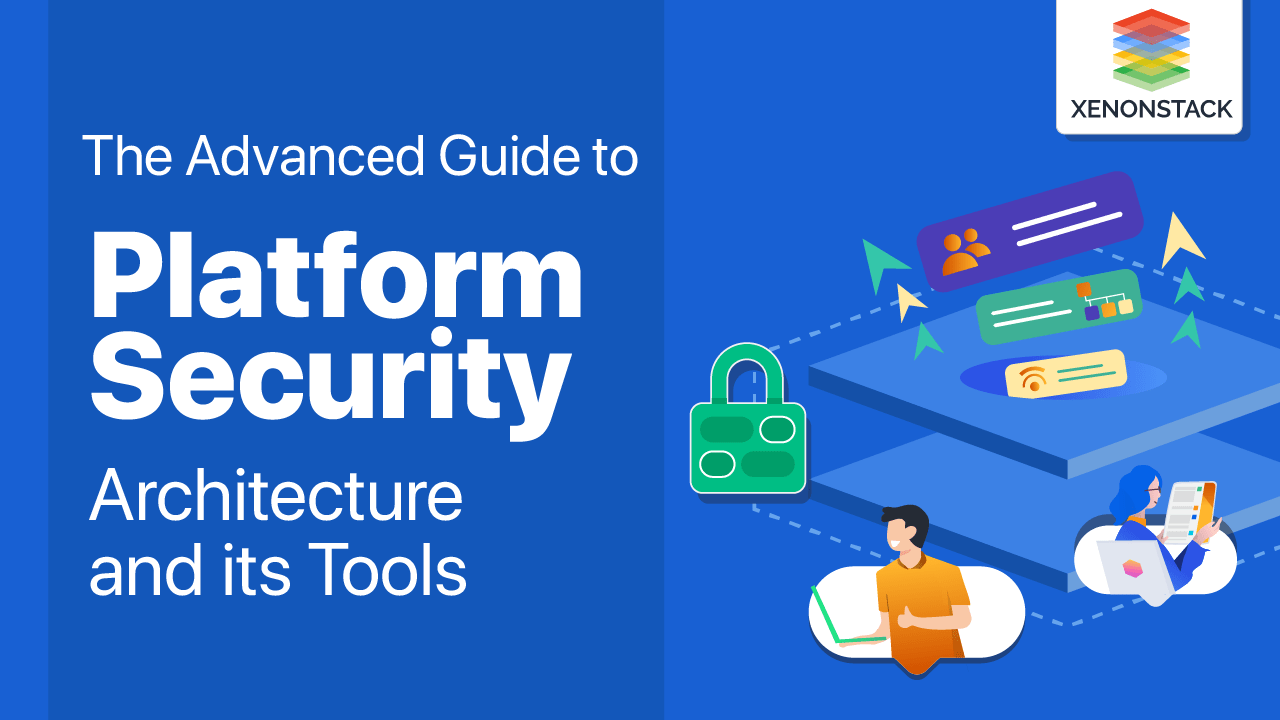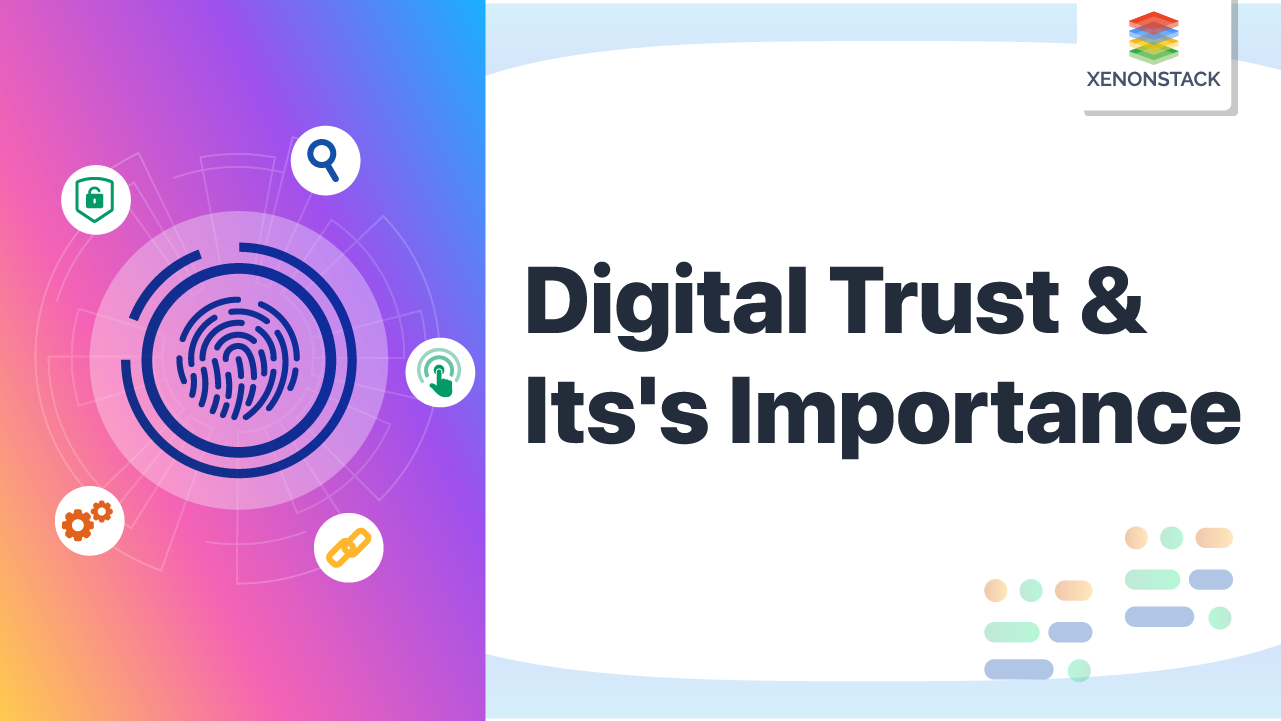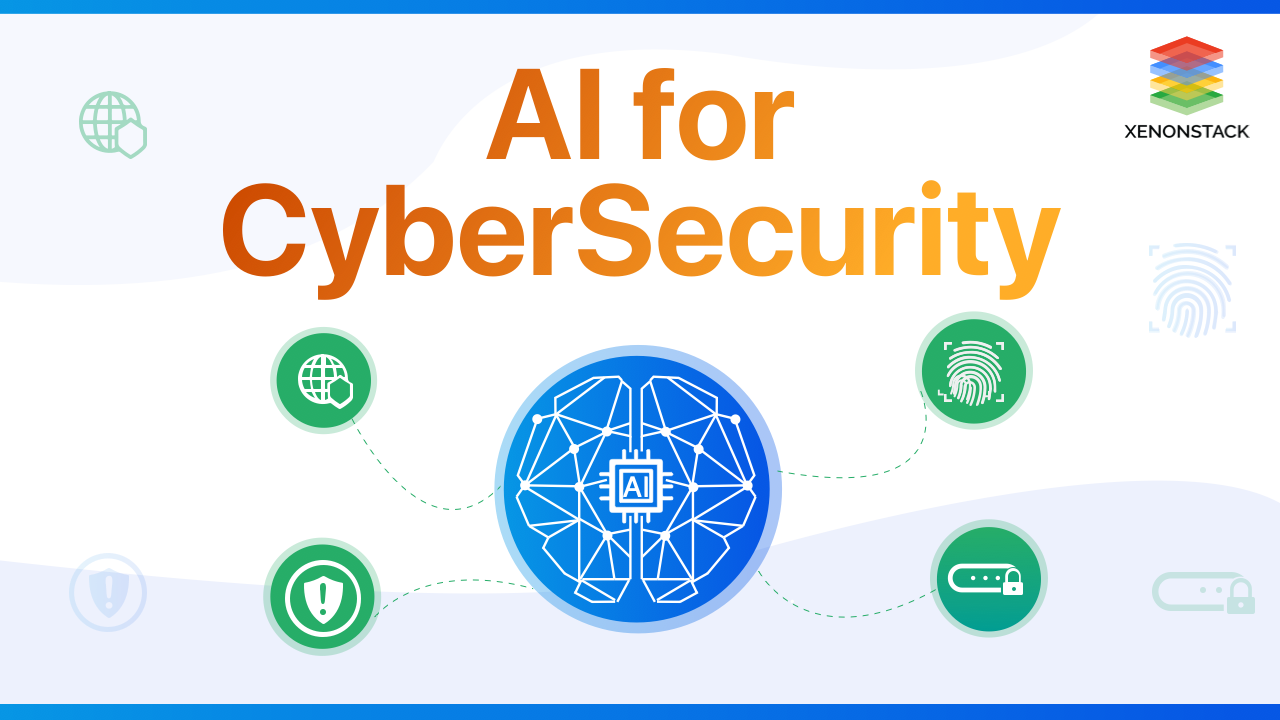
Introduction to Platform Security
Platform security encompasses the design, technologies, and processes that ensure the protection of a computing platform. This includes the platform security architecture, tools, and systems that secure the platform’s hardware, software, network, and services. By utilizing unified security software and robust security processes, platform security safeguards critical components, ensuring comprehensive protection across all layers. The use of encrypted communication, along with advanced security models and methods, plays a crucial role in maintaining the integrity and confidentiality of the platform’s infrastructure.
Bundled/unified security software, systems, and processes in computing platform security make the platform's hardware, software, network, and software as safe as feasible. These processes:
- Ensures that all components of the platform are as secure as possible.
- Utilizes software and processes designed to provide comprehensive protection.
- Maintains the integrity of the computing environment.
The Role of a Security Model in Platform Protection
A security model protects a complete platform and safeguards all of the software and devices on that platform, eliminating the need for special or multiple security measures for distinct programs on the system. Platform-level security streamlines the security process for IT and developers. When the security is breached, however, the entire platform becomes vulnerable. A trustworthy Platform Module is a type of platform security aimed to safeguard a whole component stack.
Importance of Platform Security
A robust platform security framework helps to secure both hardware and software from exploitation, reducing the risk of cyberattacks. The importance of platform security becomes especially evident in the context of risks of digital transformation, where increased reliance on interconnected systems and cloud services introduces new attack surfaces.
In cybersecurity, platform security is essential for establishing secure environments for applications to run and interact. By implementing a sandbox security paradigm, organizations can isolate critical applications, preventing breaches from spreading to other areas of the network. Furthermore, compliance with safety regulations is a key part of platform security, ensuring that companies adhere to industry standards like GDPR, HIPAA, and other data protection laws.
In the world ofBig Data, information representation devices and innovations are necessary to break down several measures of data. Click to explore our Data Visualization Tools and Platform
What are the Different Types of Platform Security?
Platform security is a critical part of its development and maintenance. Fortifying the platform from within is indeed a vital step. It may include many inner steps like having security services from web hosts, security plugins, strict protocols for user management (regular password changes), other end-points, etc. These are just some of the many layers of security essential for any Platform to be built and maintained efficiently.
Below are the top 10 types of security standards that any platform requires
-
Computer Antivirus: Detects and removes malware like viruses, worms, and Trojans, protecting the platform from threats.
-
Anti-Spyware Software: Prevents spyware from tracking activities or stealing sensitive data.
-
Network Security: Protects the platform's network infrastructure from unauthorized access and attacks.
-
Firewalls: Filters incoming and outgoing traffic to block unauthorized access to the platform.
-
Password Managers: Securely stores and manages passwords, ensuring strong and unique credentials for each account.
-
Encryption Software: Encrypts data at rest and in transit to keep sensitive information secure.
-
Log Management Software: Collects and analyzes logs to detect security incidents and ensure compliance.
-
Bot Mitigation: Detects and blocks malicious bots that could abuse platform resources.
-
Monitoring Tool: Provides real-time monitoring to detect and alert potential security issues.
-
Intrusion Prevention Software: Identifies and blocks malicious network traffic to prevent intrusions before they occur.
Digital Platforms have become an absolute necessity of any business and no longer a strategy of digital natives. Click to explore about our, Digital Platform Strategy
Essential Components of Platform Security Architecture (PSA)
The Platform Security Architecture (PSA) is a security framework for trillions of networked devices. It comprises a comprehensive set of deliverables, including documentation for Threat Models and Security Analyses, hardware, and firmware architecture standards, APIs and an API test suite, and PSA Certified, an independent security review and certification method. With an open-source reference implementation, you can ensure that all connected devices have the appropriate level of security.
PSA incorporates and expands on industry best practices. It's aimed at everyone in the supply chain, from semiconductor designers and device developers to cloud and network infrastructure providers and software vendors. The arm is leading the ecosystem in its quest to defend the linked world alongside our partners. Platform Security Architecture (PSA) was created to simplify security concepts and designs.
Goals of the PSA Framework
-
Simplify the process of assessing IoT devices for compliance with safety regulations.
-
Reduce software development costs and complexity for ecosystem partners by allowing reuse, improving interoperability, and reducing API fragmentation.
By creating the safety model and utilizing the primitives provided by the PSA, SoC designers can reduce safety and complexity costs.
Requirements for Achieving the Above Goals
-
Create a framework for certifying and evaluating an Arm-based SoC or device.
-
Identify the most critical security elements.
-
Define a security paradigm for a sandbox.
-
Define a framework for third-party software manufacturers to implement security functionalities.
-
Define the essential, safe hardware platform for the Internet of Things.
-
For IoT devices, provide a reliable and open-source reference implementation (similar to Trusted Firmware)
A methodology or an operating model that establish an Agile relationship between growth and IT operations. Click to explore about our, DevOps on Google Cloud Platform
What are the Stages in Platform Security Architecture?
PSA provides a framework for safeguarding networked devices. This architecture offers a step-by-step guide to incorporating the appropriate device security level, lowering data reliability risks, and allowing businesses to experiment with new ideas to reap the benefits of digital transformation.
The PSA was established to ensure security is built into a gadget.
Here are the four primary PSA stages.
Analysis stage
For three popular IoT use scenarios, the analysis stage provides freely available examples of Threat Models and Security Analyses (TMSA). This stage aims to assess the dangers that could compromise your device and develop a set of security needs based on the risks.
Architect stage
The architect stage includes a set of open-source hardware and firmware specs that you may use to build the appropriate security features for your device. The PSA Security Model (PSA-SM), Trusted Boot Firmware Update (TBFU), Trusted Base System Architecture (TBSA), and PSA Firmware Framework are among the requirements (PSA-FF). The PSA Security Model guides the use of the other PSA specifications by providing crucial language and techniques for PSA.
Implementation stage
In the implementation stage, an open-source firmware reference implementation, APIs, and an API test suite are available. These APIs provide a uniform interface to the underlying Root of Trust hardware and give developers a trusted code base that complies with PSA criteria. In addition, three sets of PSA APIs provide application interoperability across diverse device Root of Trust hardware implementations. PSA Functional Developer APIs for RTOS and software developers, PSA Firmware Framework APIs for security experts, and TBSA APIs for semiconductor makers are only a few examples.
PSA Certified stage
The PSA Certified stage, established by Arm and its security partners, is an independent review and certification method. PSA Functional API Certification and PSA Certified are the two main areas of the system. This certification uses an API test suite to ensure that software uses PSA APIs correctly. It includes three levels of assurance and robustness testing, allowing device makers to select solutions most suited to their needs.
A solution combines all the capabilities and every feature of many big data applications into a single solution. Click to explore about our, Big Data Platform
Key Tools for Effective Platform Security
Let's look at some of the major Security tools used in the current market.
Arxan Application Protection
This utility can protect Runtime Applications (RASP). Arxan Application Protection, especially useful for mobile apps, protects against reverse engineering and code tampering.
Black Duck from Synopsys
During application development, Black Duck automates open-source security and license compliance. It may detect, monitor, correct, and manage your open-source apps. Other app security vendors, such as Coverity and Codenomicon, have been acquired by Synopsys.
Burp Suite from PortSwigger
BSuite is a prominent penetration testing tool. All tools use a typical architecture to handle and display HTTP messages, persistence, authentication, proxies, logging, and alerting. More excellent automatic and manual testing tools and options for connectivity with many significant frameworks like Jenkins and the availability of a fully-documented REST API are available in the commercial editions.
CA/Veracode App Security Platform
Veracode is a pretty comprehensive set of security testing tools and services for threat mitigation housed on a single platform. It identifies flaws and estimates hazards in development and production environments. The product has a large following and has been around for a long time. Hundreds of thousands of different apps have been tested with it. Veracode can be used for small and big installations, and users commonly cite its superior ease of use.
Fortify from MicroFocus
Fortify's integrated development and testing platform is available in SaaS and on-premise editions. It also has mobile versions and allows constant app monitoring. Despite the multiple corporate overseers, it comes to MicroFocus from the HPE software division, which has a lengthy history and substantial installed base. Fortify is also compatible with the Eclipse IDE and Visual Studio.
AppScan by IBM Security
Security AppScan is part of IBM's extensive application security product range. Source, Standard, and Enterprise are the three versions available. The software is renowned for its ability to import data from human code reviews, penetration testing, and competitors' software vulnerability scanners in several formats. There are different mobile versions for scanning iOS and Android apps.
Rogue Wave's Klocwork
Static application scanning, continuous code integration, and a code architecture visualization tool are among the features offered by Klocwork. It has built-in security checking tools for CERT, CWE, and OWASP standards. It can detect code injections, cross-site scripting, memory leaks, and other potentially dangerous programming techniques.
Prevoty from Imperva
Another tool used for Runtime Application Self-Protection is Prevoty (RASP). It protects against code tampering and reverses engineering, which is especially important for mobile apps.
Selenium
Selenium is a set of tools for automating the testing of web applications and their functionality across various browser versions. Selenium scripts come with an integrated development environment. It works as a browser extension and allows you to record, edit, and debug tests and record and playback scripts. Selenium offers many third-party plug-ins to detect security problems in mobile and web browsers.
Zed Attack Proxy from OWASP
OWASP is also responsible for the Zed Attack. The tool results from the efforts of a large open-source community and is intended to assist you in automatically detecting security flaws in your web apps as you develop them. Zed Attack sits between your app and a browser, intercepting web traffic and scanning it for flaws.
The increased usage of big data would affect the understanding and application of business intelligence and its security by organizations.Click to explore about our, Big Data Security and Management
Benefits of Implementing Strong Platform Security
-
Data Protection Strategies: Safeguards sensitive information from unauthorized access or leakage, ensuring confidentiality and integrity.
-
Trusted Environment: Ensures that devices operate in a secure environment, reducing vulnerabilities and the risk of exploitation.
-
Customizable Security Features: Device security levels within the platform allow for tailored security measures based on the type of device or application, enhancing protection.
-
Enhanced Interoperability: Facilitates seamless integration of different systems and platforms while maintaining a high level of security across all components.
-
Risk Evaluation Tools: Security analyses and threat models help organizations assess and proactively address potential risks, strengthening overall security posture.
-
Certification and Trust: Achieving certifications like PSA Certified validates that the platform adheres to high-security standards, boosting customer trust and confidence.
Best Practices for Securing Platforms
To maintain a strong AWS security posture, organizations should follow these key best practices:
- Security Model Implementation: Ensure all devices follow a strong Root of Trust for foundational security.
- Regular Firmware Updates: Apply Trusted Boot Firmware Updates (TBFU) to secure boot processes and prevent exploits.
- Application Layer Security: Use sandbox security to isolate applications, preventing unauthorized access or interference.
- Continuous Security Assessments: Regularly conduct penetration testing and security analyses and update defenses based on emerging threats.
Emerging Trends in Platform Security
-
Comprehensive Protection Across Lifecycles: Future application security tools will ensure end-to-end protection throughout the entire software lifecycle, from development to deployment, adapting to evolving threats.
-
Multi-Platform Support: As applications diversify across legacy systems, desktop, cloud, and mobile platforms, security solutions will evolve to support and protect all types of applications, ensuring greater compatibility.
-
Focus on Application Layer Security: The emphasis will shift towards securing the application layer itself, rather than just the network, preventing vulnerabilities from being exploited within the software environment.
-
Vulnerability Testing and Risk Remediation: Future solutions will integrate continuous vulnerability testing and proactive risk remediation to provide a robust, real-time defense.
-
Custom Security Profiles: Developing customized security profiles for each application to identify and mitigate unique threats will become an essential practice for securing software environments.
-
Simplified, Scalable Solutions: As demand grows for cross-platform security, solutions will become more streamlined and scalable, offering seamless integration and ease of deployment across diverse application ecosystems.
Why Platform Security is Crucial for Business Success?
As businesses embrace digital transformation, they are leveraging emerging technologies to innovate and uncover new opportunities. This shift is fueled by the proliferation of connected devices, which generate massive amounts of data and provide valuable insights that shape key decision-making processes. However, the value of this data is directly tied to its reliability, making data security a critical factor in successful digital transformation. With the rising threat landscape, platform security has become an essential element for safeguarding data integrity and ensuring the confidentiality of sensitive information. To fully capitalize on the benefits of digital transformation, businesses must prioritize cybersecurity, focusing on securing both data and the infrastructure that supports it to maintain trust and mitigate risks effectively.
Steps to Enhance and Secure Platform Security
Talk to our experts about implementing platform security architecture and tools. Discover how industries and departments use Agentic Workflows and Decision Intelligence to strengthen decision-making within security frameworks. Leverage AI to automate and optimize platform security tools, improving IT support and enhancing the efficiency and responsiveness of security operations across various platforms.


